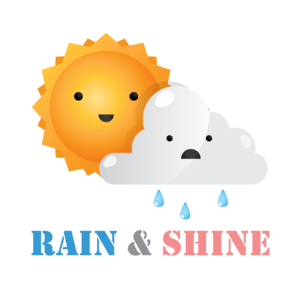Project Groups
|
|
|
|
|
|
Project Groups
Please change Your Team name to your project topic and change student name to your own name
| Project Team | Project Title/Description | Project Artifacts | Project Member |
|---|---|---|---|
|
|
Enhancing the exploration of resident distribution and social demographic across planning area with Visual Analytics With Singapore’s growing population and limited resources, she has to oversee several developing social trends to enjoy consistent prosperity and harmony. These social trends encompass growing income inequality, low birth rates and equal opportunities for education across planning areas. As such, insights on educational qualification, resident distribution, and demographics are key in ensuring better awareness of these dangerous trends and will help educate and inspire both the public and policy makers to build a holistic Singapore together.
|
| |
|
Identify in-depth insights and trends of the Climate in Singapore with Interactive Visualisations The current reporting of Singapore's Climate has always been primitive and thus it is challenging to derive in-depth insights for viewers. In 2019, multiple news companies reported that Singapore is heating up twice as fast as the rest of the world. When combined with the island’s constant high humidity, it could be life-threatening. Professor Matthias Roth of the department of geography at the National University of Singapore (NUS) attributed the rising temperatures to global warming and the Urban Heat Island (UHI) effect. However, there was no data given to back up their claims on the changes in Singapore's weather.
|
| ||
|
Visualizations of Stack Overflow Developers' Survey Stack Overflow is arguably the biggest online community for developers all around the world. Each year, Stack Overflow field a survey with questions ranging from developers’ favorite technologies to their job preferences. This is done to allow Stack Overflow to better understand its active users. For 2019, nearly 90,000 developers participated in this 20-minute survey. Although the official Stack Overflow website provides a series of visualizations for all the results of their survey questions, we found that there is a lack of comprehensive and interactive visualizations. After much deliberation, our team has narrowed down to three main aspects that we think are the most interesting and useful to the general users: Technology, Salary, and Job.
|
| ||
|
Visualize the underlying patterns behind suicide Close to 800 000 people die due to suicide every year, which comes up to one every 40 seconds according to the World Health Organisation (WHO). Suicide is a global phenomenon, present in many countries and is pervasive to people from all walks of life. In the last 45 years, suicide rates have increased by 60% worldwide and is now the second leading cause of death among young people after road injury.
|
| ||
|
Visualizing the trends and pattern of video game sales The video game industry has grown massively over the years, with $2.3 billion in sales in the US alone in 2019. However, the industry has also shown signs of stagnation, with a 19% decline in sales from the previous year. With an increasingly saturated market and disruption caused by mobile and VR games, we aim to create an interactive platform to understand the trends of the industry and come up with insights to aid future and existing developers. |
| ||
|
|
Visualizing Singapore's Higher Education Landscape Singapore’s education system has always been regarded as one of the most successful in the word and Education have been a key area of focus of development by the government to produce new talents and act as a source of revenue by attracting international students. Information such as the Graduate Employment Survey, Enrolment of students, government expenditure and the Global Competitiveness Index (GCI) rankings report on Singapore's education system are located either on various institutions’ website, government generated reports or on data sites. Hence, the general reader is unable to get the full information on higher learning institutions in Singapore.
|
| |
|
|
Visualization and insights of HIV in the United States HIV/AIDS, a chronic manageable disease, is a global pandemic that has created unprecedented challenges for physicians and health infrastructures. There is no cure for HIV yet. However, treatment can control HIV and enable people to live a long healthy life. |
| |
|
Visualization: Singapore HDB Resale Flat Trend Analysis using Price and Volume As a buyer looking for Resale HDB flats, it can be difficult to make a purchase decision due to the lack of information in the market. Information such as increasing or decreasing price trends over the years for each estate (e.g. Tampines) or submarket (e.g. 4-ROOM flats) could be essential in the decision making process. Current tools available in the market are insufficient to supplement this decision making process as they can be unnecessarily detailed resulting in the inability to conduct a high level analysis (e.g. Price trends for each submarket and/or estate). |
| ||
|
GDP per Capita vs Air Quality: Does Economic Development Necessitate Pollution?
|
| ||
|
Visualizing the Imports and Exports of Singapore's Foreign Trading Singapore has long been the key transport hub in the ASEAN region. However, global developments such as the trade war between the US and China, and events closer to home such as Thailand building the Kra canal may shift the balance out of Singapore’s favour. It is key to correctly strategise in such uncertain times. We aim to be able to create new insight and actionable strategy as to how Singapore can maintain its position as a key transport hub. |
| ||
|
|
(DR.HDB) - Dissecting the Resale HDB In the past, Singaporeans would turn to the primary source giver of Resale housing information known as The Housing Development Board (HDB) to understand the changes surrounding real estate. With the advent of Singstat and other public domain data sources, there are various online visualisations that Singaporeans seek guidance from, to understand the Housing situation in Singapore.
|
|











